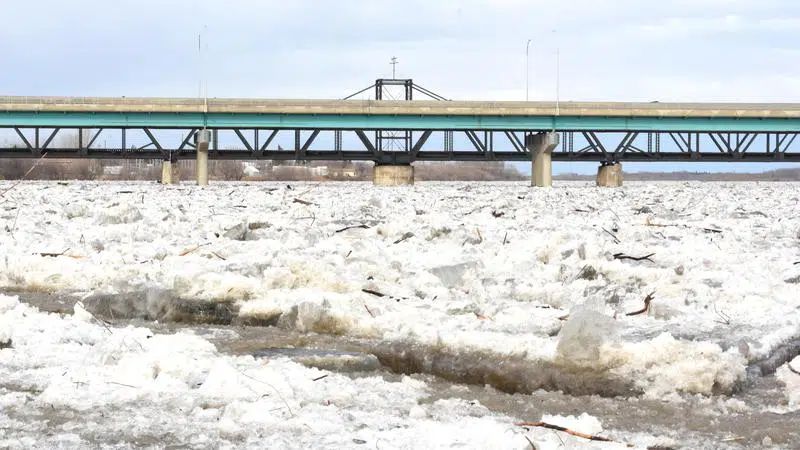
P.A. police ask public to keep ‘safe distance’ from high flowing North Saskatchewan River
On early Sunday morning, the North Saskatchewan River started to roar as it had its annual spring ice break up.
This has led to flooding along the riverbank, at Little Red River park and areas along the Rotary Trail, due to higher than normal water levels. According to the City of Prince Albert, the river rose to as high as 6.584 metres, and at a speed of 2870 cubic metres per second.
“We have been actively monitoring the river and it appears it has peaked and levels are steadily declining,” Wes Hicks, director of public works for the City of Prince Albert, said in a statement. “There has been damage to sections of the rotary trail but the extent at this stage is unknown and will be assessed in the coming days.”
The height of the river is so high, parts of the Rotary Trail that run along the river are completely washed out with water, ice, and slush. There are also large chunks of ice, logs among other things flowing at a large rate of speed.


